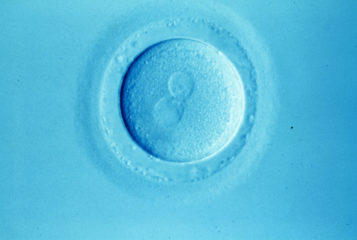Carrier screening is one method that has historically been used to test gamete donors in a clinical setting, to maximise the chances of success in assisted conception and to reduce the risks to the health of the resulting donor-conceived child and recipient. While carrier screening was at first offered for one gene at a time, in 2010, a 'universal carrier test' became available, allowing for expanded carrier screening which involves identifying simultaneously the presence or the absence of many gene variants which might be associated with different conditions of varying severity and predictability.
To discuss how the possibilities and concerns these new possibilities in donor testing raise, Progress Educational Trust (PET), the charity which publishes BioNews, hosted an online event sponsored by the Scottish Government entitled 'Careful What You Look For: What Should We Be Testing For in Sperm and Egg Donors?'.
Sarah Norcross, Director of PET, chaired the session, laying out its guiding questions. Expanded carrier screening makes us question, she said, what is it reasonable to screen for or not to screen for? In a public healthcare system, what are the costs associated with this? Given that everybody is a carrier of at least some disease-related gene variants, does expanded carrier screening threaten to exclude most or perhaps all potential donors? Of these questions, it seemed to me that the first would be the most difficult to reach consensus on, and was therefore also the one that needed to be most urgently discussed. It was heartening to see that the speakers and audience took up the challenge.
The first speaker was Zosia Miedzybrodzka, professor of medical genetics at the University of Aberdeen, and also importantly in the context of the discussion, former lead for NHS implementation at the Scottish Genomes Partnership. Professor Miedzybrodzka laid out an important scientific basis for the discussion. She'd initially called her presentation, 'Be Careful What You Wish For' – an accident, she told us, but nonetheless quite applicable, given that screening throws up genetic information that might have a significant impact on people's reproductive choices.
She explained that our bodies are made of cells, with each cell containing a full set of DNA instructions to make every protein, which is what our bodies are made of. We get half our DNA from our mother, half from our father, and it is stored on chromosomes.
The vast majority of problems discussed in relation to carrier screening, she said, happen when offspring inherit two copies of a mutated gene, one from each parent, called autosomal recessive inheritance. In this situation, the parent carriers of the faulty genes are often unaware, as they carry only one variant copy, as well as a normal copy of the gene, and therefore make enough of the relevant protein to develop normally. This autosomal recessive inheritance was key to the discussion, as it raised the question of whom we should screen and how far we should go: should both parents be screened, or just the children? Should we test for childhood or adult onset diseases? What diseases are deemed serious enough to test for? How do we handle the privacy concerns related to the information gathered? What if we discover, for example, that the donor has a disease they didn't know about?
In the clinical context, where screening is performed to help couples have healthy babies, the efficacy of screening donors, parents or children is moderated by the fact that many serious problems affecting children don't have a genetic basis we can detect. Down's syndrome for example, would not be detected by screening as it is not usually inherited from the parents. Screening will only be effective in specific circumstances, for known conditions.
Having been given this scientific disclaimer, the second speaker, Scott Nelson, professor of reproductive and maternal medicine at the University of Glasgow, presented an emphatic case for screening. There are limitations to our knowledge, he agreed, but the more we test, the more information we'll have; the more we test couples, the more likely we are to identify that both are carriers. He made a case that certain autosomal recessive conditions are more common in certain populations and that targeted prevention strategies can be developed. He argued that expanded carrier screening could be used on donors with limited selection criteria, and that we could test much earlier, not just pre-conception, but anywhere in lifespan of the donor, allowing us to predict and prevent debilitating disease, while also saving the NHS money.
He summarised his arguments in favour of screening with the question we might ask ourselves when faced with cases of debilitating disease in children: could we have done anything to prevent this? This was then a point where cost and ethical imperative seemed to have align for Professor Nelson. However, the argument skirted the difficult question: what is it that we are trying to prevent? What diseases can we agree on? How do we balance the mitigation of cost with money spent on supporting people living with these conditions now? These questions were developed as the conversation progressed.
Véronique Berman, scientific adviser and community development manager at Chana, an organisation that supports Jewish couples experiencing infertility, provided a case in point for Professor Nelson's argument in favour of targeted screening in high risk groups. She drew on Tay-Sachs disease among several other genetic conditions that are more common in the Jewish community, showing that one in five Ashkenazi Jews will be carriers of at least one of these genetic disorders. She made the case for screening of these conditions far in advance, allowing people to plan their reproductive choices earlier on in life when there are more options available, emphasising that the choice should be with the patient. She concluded that in many cases, such as the case of Tay-Sachs, history has shown that screening does help reduce occurrences in the population, and that this should be extended to donors and not just those planning on having children.
On the topic of donors, Guido Pennings, professor of ethics and bioethics at Ghent University and director of the Bioethics Institute Ghent, asked that more attention is paid to the consequences of screening for the gamete donor. When we do this, he argued, the benefit of donor screening in mitigating genetic disease does not outweigh the harm done to the donor. Gamete donors, he argued, are seen as the providers of material in commercialised reproductive services. Because they are paid for their contribution, they are considered secondary to the recipients undergoing treatment. The donor, for example, does not have the same freedom to refuse genetic testing that the rest of the population has. Given that there are commercial interests for clinics that trump the rights of the donors, he says it is imperative that there is a serious re-evaluation of the current situation so as to protect the donors' interests (see BioNews 1060).
Financial questions extended into the question-and-answer session. Here, the focus was on the general difficulty in attracting UK government funds for schemes like expanded carrier screening aimed at prevention, rather than care. Professor Miedzybrodzka in particular stressed the difficulty.
Professor Joyce Harper, speaking from the audience, moved this question beyond one of cost, to important issue of the lack of standardisation in the screening panels. There needs to be a discussion on whether, and which recessive disorders we test for, with concern for those already living with the disability. This was, then, the difficult question that had to be tackled: how we select the diseases we choose to prevent, and how we deal with the social consequences of this. Professor Nelson agreed that standardisation was important, and that a line would have to be drawn, which would be arbitrary but could be re-evaluated in the future in line with new scientific possibilities.
Professor Miedzybrodzka raised the example of preimplantation genetic diagnosis (PGD) as a precedent. Here, the HFEA has changed the list of conditions tested for over time, and in clinical practice, the family's screening choices vary based on personal experience. Some families with a child with cystic fibrosis will still not want to test their next child, while some infertility patients won't have as many embryos available for testing as others. This variation in biological capacity and worldview among patients needs to be considered, and any standardised list should be nationally coordinated and take into account the varying perspectives of patients who understand these very personal decisions. There was then, consensus on consensus – decisions had to be made in the best interest of patients and donors, to ensure that current practices are driven by the needs of patients, rather than limited by commercial interest.







Leave a Reply
You must be logged in to post a comment.